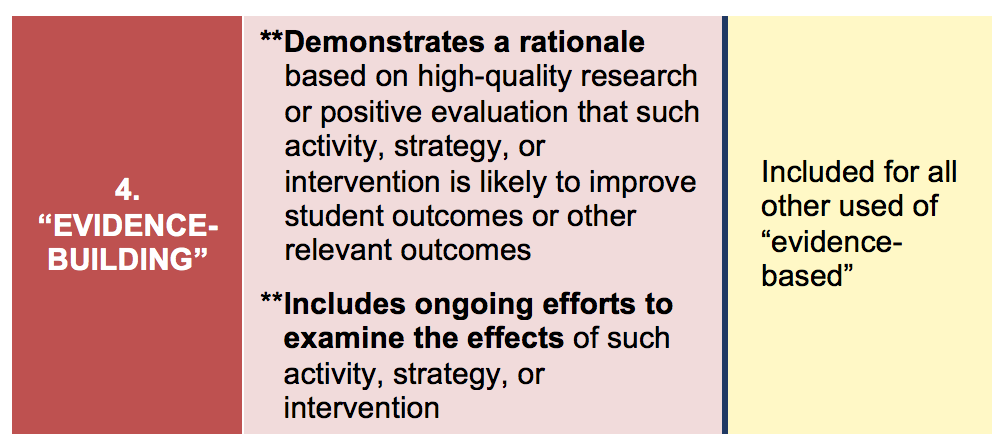The term ‘evidence-based,’ when used with respect to a State, local educational agency, or school activity, means an activity, strategy, or intervention that either –
A. demonstrated a statistically significant effect on improving student outcomes or other relevant outcomes –
- strong evidence from at least one well-designed and well-implemented experimental study; OR
- moderate evidence from at least one well-designed and well-implemented quasi-experimental study; OR
- promising evidence from at least one well-designed and well-implemented correlational study with statistical controls for selection bias;
OR
B. demonstrates a rationale based on high-quality research findings or positive evaluation that such activity, strategy, or intervention is likely to improve student outcomes or other relevant outcomes; AND includes ongoing efforts to examine the effects of such activity, strategy, or intervention.
(Section 8101(21)(A) of the ESEA)
The Every Student Succeeds Act defines four tiers of evidence, directing grantees to spend funds on practices with higher levels of evidence where the evidence base is strong, while allowing grantees to spend funds on all levels where the evidence base is developing.
The top three levels require at least one study that found a statistically significant effect on improving student outcomes or other relevant outcomes. The specific level of evidence (1-3) depends on the study’s design:

The forth level of evidence includes ideas that do not yet have an evidence base qualifying for the top 3 levels. Given the requirement in the 2nd bullet below to examine the effects of these ideas, this level can be referred to as “evidence-building.”




